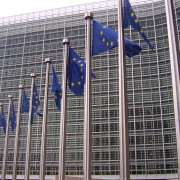According to a new survey report, “Biorational Pesticides Market Global Forecast to 2022“, the biorational pesticides market is projected to grow at a CAGR of 12.5% from 2017 to reach a value of USD 5.02 Billion by 2022. The term “biorational” is used to describe those pesticides that are efficacious against target pests but are less detrimental to natural enemies. The term is sometimes also used to describe only those products derived from natural sources such as plant extracts and insect pathogens. However, this report defines a biorational pesticide as “any type of insecticide active against pest populations, but relatively innocuous to non-target organisms and therefore, non-disruptive to biological control.”

The rise in concerns about food safety has led to farmers exploring new environment-friendly methods to replace or supplement the current chemical-based practices. The use of biorational pesticides has emerged as a promising alternative to chemical pesticides. Promotions by government organizations for the adoption of biorational pesticides and their low cost compared to that of chemical pesticides are some prominent factors that are expected to drive market growth through the next five years in most regions.
On the basis of type, the biorational pesticides market was led by biorational insecticides segment in 2016. It is one of the most largely commercially available types of biorational pesticides. North American countries are expected to become major markets owing to the high awareness among farmers and this contributes to the growth of the global biorational pesticides market in the near future.
The botanical segment dominated the market in 2016. Botanical pesticides contain naturally occurring substances that control pests using a non-toxic mechanism. The substances that control diseases in this category include pyrethrin, azadirachtin, and plant extracts, while botanical oils such as neem oil, canola oil, and jojoba oil drive the growth of this segment.
The biorational pesticides market, on the basis of mode of application, is segmented into foliar spray, soil treatment, and trunk injection. The foliar spray segment covers the largest market share as direct application on leaves through foliar spray is the most effective way of supplying nutrients to plants, which results in enhanced productivity and greater yield; this also leads to rapid absorption and uniform supply of the nutrients to each part of the shoot and root.
North America accounted for the largest market share for biorational pesticides in 2016, owing to the increase in demand for biorational pesticides in countries such as the US and Canada. However, Asia Pacific is projected to be the fastest-growing market during the forecast period, due to increased awareness and increasing production of organic fruits & vegetables.
In organic production systems, biorational pesticides represent the most significant crop protection tools that a grower has to produce a quality crop. While their use is not overly complicated, the application of some biorational pesticides may require a high level of understanding and knowledge of the diseases and pathogens that they are designed to control. As with any disease management program, proper timing and application are essential to ensure efficacy. Biorational pesticides may not perform as quickly as some synthetic chemical pesticides. However, biorational pesticides are generally less toxic to the user and are mild on non-target organisms, making them desirable and sustainable tools for disease management.
Source: Agropages


